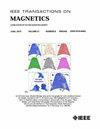远程激光切割NO20无取向电工钢的磁退化及切口表面分析
IF 1.9
3区 工程技术
Q3 ENGINEERING, ELECTRICAL & ELECTRONIC
引用次数: 0
摘要
本文研究了非晶粒取向(NGO)硅铁电工钢(NO20)的远程激光切割工艺参数,目标是精确和清洁的层合表面,可接受的整体切割时间,以及低磁性退化。NO20常用于旋转电机。远程激光切割相对于传统的切割方法(如冲孔)提供了更高的设计灵活性,从而获得更高的设计自由度。然而,不正确的激光设置可能导致材料磁性的强烈退化,以及烧毁的层压表面和不准确的切割轮廓。最佳的激光功率和扫描速度设置是通过局部切割的显微镜和完全切割的样品条的表面检查来确定的。此外,对样品条进行了磁性表征,以确定扫描之间的最佳空闲时间(IT)。最后,将本研究中研究的远程激光切割的最佳参数集与断头台和电火花加工(EDM)方法进行了比较,发现在切割质量和对磁性能的影响方面比较有利。本文章由计算机程序翻译,如有差异,请以英文原文为准。
Analysis of Magnetic Degradation and Kerf Surface for NO20 Non-Oriented Electrical Steel Subjected to Remote Laser Cutting
This article investigates process parameters for remote laser cutting of non-grain-oriented (NGO) silicon iron electrical steel (NO20), targeting a precise and clean lamination surface, acceptable overall cutting time, and low degradation of magnetic properties. NO20 is commonly used in rotating electrical machines. Remote laser cutting offers a higher design flexibility with respect to traditional cutting methods such as punching, resulting in higher design freedom. However, incorrect laser settings can result in a strong degradation of material magnetic properties as well as burned lamination surfaces and inaccurate cut profiles. Optimal laser power and scan speed settings are identified by microscopy of partial cuts and by surface inspections of fully cut sample strips. In addition, the magnetic characterization of sample strips is carried out to identify the optimum idle time (IT) between scans. Finally, the optimum parameter set for remote laser cutting investigated within this study is compared against guillotine and electrical discharge machining (EDM) methods, and found to compare favorably in terms of cut quality and impact on magnetic properties.
求助全文
通过发布文献求助,成功后即可免费获取论文全文。
去求助
来源期刊

IEEE Transactions on Magnetics
工程技术-工程:电子与电气
CiteScore
4.00
自引率
14.30%
发文量
565
审稿时长
4.1 months
期刊介绍:
Science and technology related to the basic physics and engineering of magnetism, magnetic materials, applied magnetics, magnetic devices, and magnetic data storage. The IEEE Transactions on Magnetics publishes scholarly articles of archival value as well as tutorial expositions and critical reviews of classical subjects and topics of current interest.
 求助内容:
求助内容: 应助结果提醒方式:
应助结果提醒方式:


